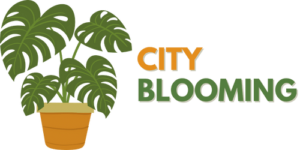The Facts About City Blooming Uncovered
Wiki Article
Getting The City Blooming To Work
Table of ContentsMore About City BloomingThe Definitive Guide to City BloomingOur City Blooming DiariesHow City Blooming can Save You Time, Stress, and Money.City Blooming Things To Know Before You Get This
Intrigued in growing food for sale in the City of Chicago? Below is a checklist of regularly asked concerns pertaining to the regulations and guidelines that cultivators ought to think about when preparing an urban agriculture project.
The zoning change does not modify any other codes taking care of composting, building licenses, purchasing or renting City owned property, service licenses or ecological contamination. There are existing codes that control these issues and they continue to be completely result and may be suitable to your job. Area yards are generally had or managed by public entities, public companies or community-based companies and preserved by volunteers.
Urban ranches expand food that is planned to be marketed, either on a nonprofit or for-profit basis. Because of their business purpose, metropolitan ranches need a business certificate. Yes. A neighborhood garden is permitted to sell surplus produce that was grown on site if the sales are accessory or subservient to the garden's primary objective explained over.
Everything about City Blooming
The amount of compost product can not go beyond 25 cubic lawns at any type of given time according to the requirements in 7-28-715 of the City's Municipal Code. Since the dirt at most brand-new garden websites needs amending, garden compost, soil, timber chips, or various other products can be acquired to build or enhance the growing area.
If a building license is required then the hoophouse will certainly be taken into consideration an accessory structure. You can figure out more about the structure license requirements by calling the Division of Buildings. The 25,000-square-foot dimension limit is planned to stop a single area garden from dominating an offered block or interfering with the block's existing household or industrial character.
The limit does not relate to yards located in Public Open Space (POS) areas. Can there be greater than one neighborhood yard that is 25,000 square feet on a single block? Yes. The dimension limitation uses to specific yards, not to individual blocks. No. Secure fencing is not called find more for, nonetheless, gardens that have huge vehicle parking locations might be required to set up fencing or other landscape design attributes.
City Blooming - Truths
B1 & B2 districts need that all commercial usage activities be carried out indoors. R areas restrict industrial activity. The guidelines mirror the function and intent of the Zoning Code. Is fencing needed for urban farms? Yes. Fencings may be required, together with landscaping and screening, for certain parking locations and outdoor job or storage space locations relying on area and the certain task happening.Urban farms require structure authorizations and zoning authorizations prior to construction (sustainability). Other forms of city review might be required depending on particular structures, tasks, size, landscaping, licensing, public heath and stormwater administration problems.
The Department of Company Matters and Consumer Defense can aid figure out the certain kind of business license that's required. Off street car parking is required for many commercial tasks in Chicago. The required number of parking areas is based on the number of employees working on site and not the square video of the expanding space.
The 3-Minute Rule for City Blooming

Yes. A city ranch can sell garden compost product generated on site, however, the operation has to adhere to the policies in 7-28-715 of the Chicago Municipal Code. Yes. Aquaponic systems are enabled inside on urban farms in lots of zoning areas. However, a zoning review and building authorization is required in order to install frameworks or systems and a company license is called for as described above.
As much as 5 hives or swarms of honey bees might be maintained as an accessory use. However, beekeepers need to sign up with the Illinois Department of Farming. To learn more regarding the recommended zoning amendment you might get in touch with the Department of Real Estate and Economic Development, Bureau of Preparation and Zoning at 312.744.8563.
Farming in cities and urban locations A city ranch in Chicago. Urban agriculture describes different practices of growing. https://www.mixcloud.com/cityblooming/, processing, and distributing food in urban areas. The term additionally puts on the location tasks of pet husbandry, tank farming, beekeeping, and cultivation in a city context. Urban agriculture is identified from peri-urban farming, which happens in backwoods beside suburbs.
City Blooming Fundamentals Explained
, who seek to form social networks started on a shared ethos of nature and neighborhood holism. These networks can create by method of official institutional assistance, ending up being incorporated into neighborhood town planning as a "shift community" movement for sustainable urban development.Some of the very first proof of urban agriculture comes from Mesopotamia.
Report this wiki page